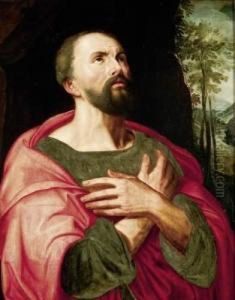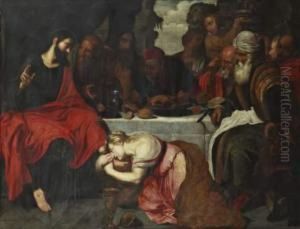Arthus Wolfort Paintings
Artus Wolffort, also known as Artus Wolffaert or Artus Wolfort, was a Flemish painter known for his history paintings and religious compositions. Born in Antwerp in 1581, he was part of the Flemish Baroque tradition and became a master in the Antwerp Guild of Saint Luke in 1603. Although he was a contemporary of Peter Paul Rubens, Wolffort did not achieve the same level of fame as Rubens during his lifetime or posthumously, but he nonetheless contributed to the rich tapestry of Flemish art in the 17th century.
Wolffort received his artistic training from the painter Adam van Noort, who was also the teacher of Rubens. While his work was deeply influenced by the Italianate style of his time and the presence of Rubens, Wolffort developed his own approach to composition and color. His paintings often featured dramatic lighting and strong contrasts, with a particular focus on religious subjects. He was known to have a predilection for monumental figures and had a distinct style that made his work recognizable.
Throughout his career, Wolffort produced altarpieces for churches in and around Antwerp, as well as mythological and allegorical scenes. His works can be found in various museums and collections across Europe, including the Royal Museum of Fine Arts in Antwerp, where some of his notable paintings are preserved. Despite the overshadowing prominence of Rubens, Wolffort's works were appreciated for their devotional intensity and technical skill.
Artus Wolffort died in Antwerp in 1641. While he may not be as well-known as other Flemish masters, his paintings remain a testament to the rich artistic environment of the Southern Netherlands during the Baroque period. His legacy is preserved through the continued study and exhibition of his works, which offer valuable insights into the religious and cultural milieu of his time.

